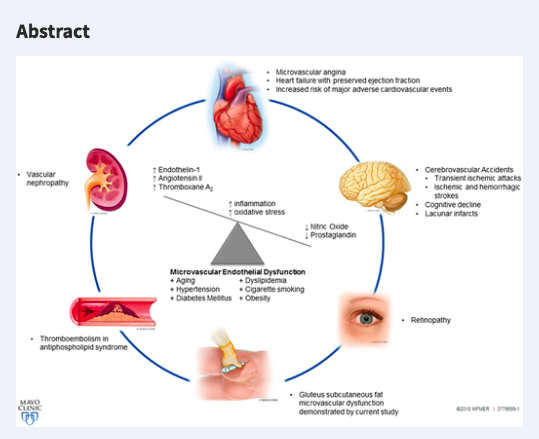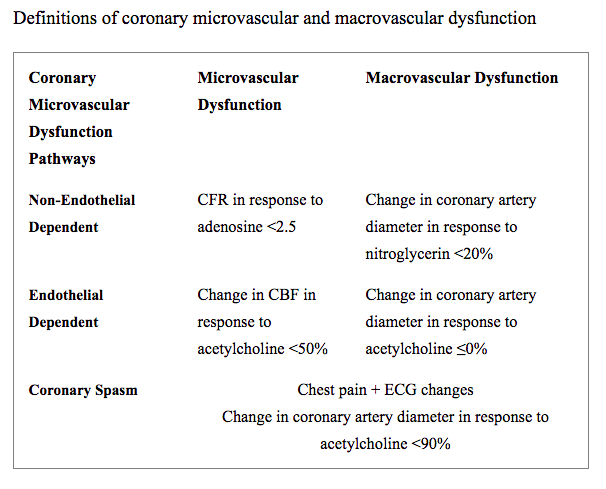Angina associated with severe coronary stenosis is triggered by exercise and relieved by rest. Angina associated with CAS or CMVD is not precipitated by excess cardiac work but by transient impairment of myocardial perfusion. But the common background is always cellular ischaemia and therefore it is difficult to imagine that pushing through might be irrelevant.
Could it damage the heart over time to have repeat CMVD / CAS events?
Both CMVD and CAS may caused prolonged myocardial ischaemia leading to myocardial infarction. So, both mechanisms may be associated with permanent cardiac damage through multiple episodes or prolonged episodes
Can you describe the relationship between CAS, CMVD and Endothelial Dysfunction?
Myocardial ischaemia has been traditionally perceived as the consequence of atherosclerotic obstructions of the coronary vessels. More recently an overwhelming body of evidence has proven that atherosclerotic obstructions are just one of several mechanisms that can precipitate myocardial ischaemia. CAS, CMVD and Endothelial Dysfunction are included among the mechanisms that, in isolated fashion or in combination, may cause myocardial ischaemia
Ubiquitous yet unseen: microvascular endothelial dysfunction beyond the heart
Michael T Corban, Lilach O Lerman, Amir Lerman
Lay Summary – Discusses if Endothelial Dysfunction could be in other parts of the body.
http://academic.oup.com/eurheartj/article/39/46/4098/5079860
Ischemia and No Obstructive Coronary Artery Disease (INOCA): Developing Evidence-based Therapies and Research Agenda for the Next Decade
C. Noel Bairey Merz, Carl J Pepine, Mary Norine Walsh, Jerome L Fleg
Lay Summary – Discusses the current understanding of INOCA (2017) and the need for future trials and effective therapies
https://www.ncbi.nlm.nih.gov/pmc/articles/PMC5385930





